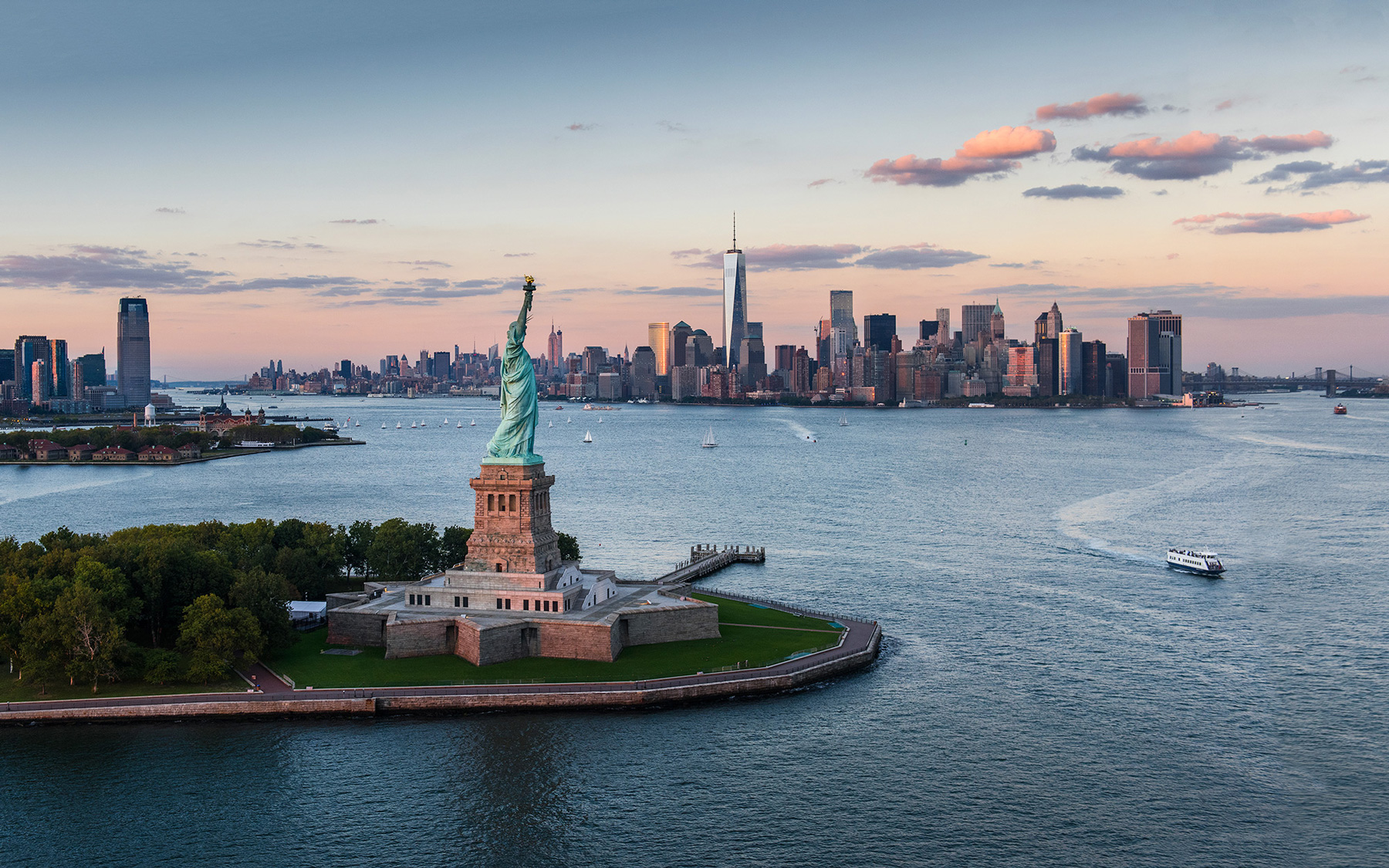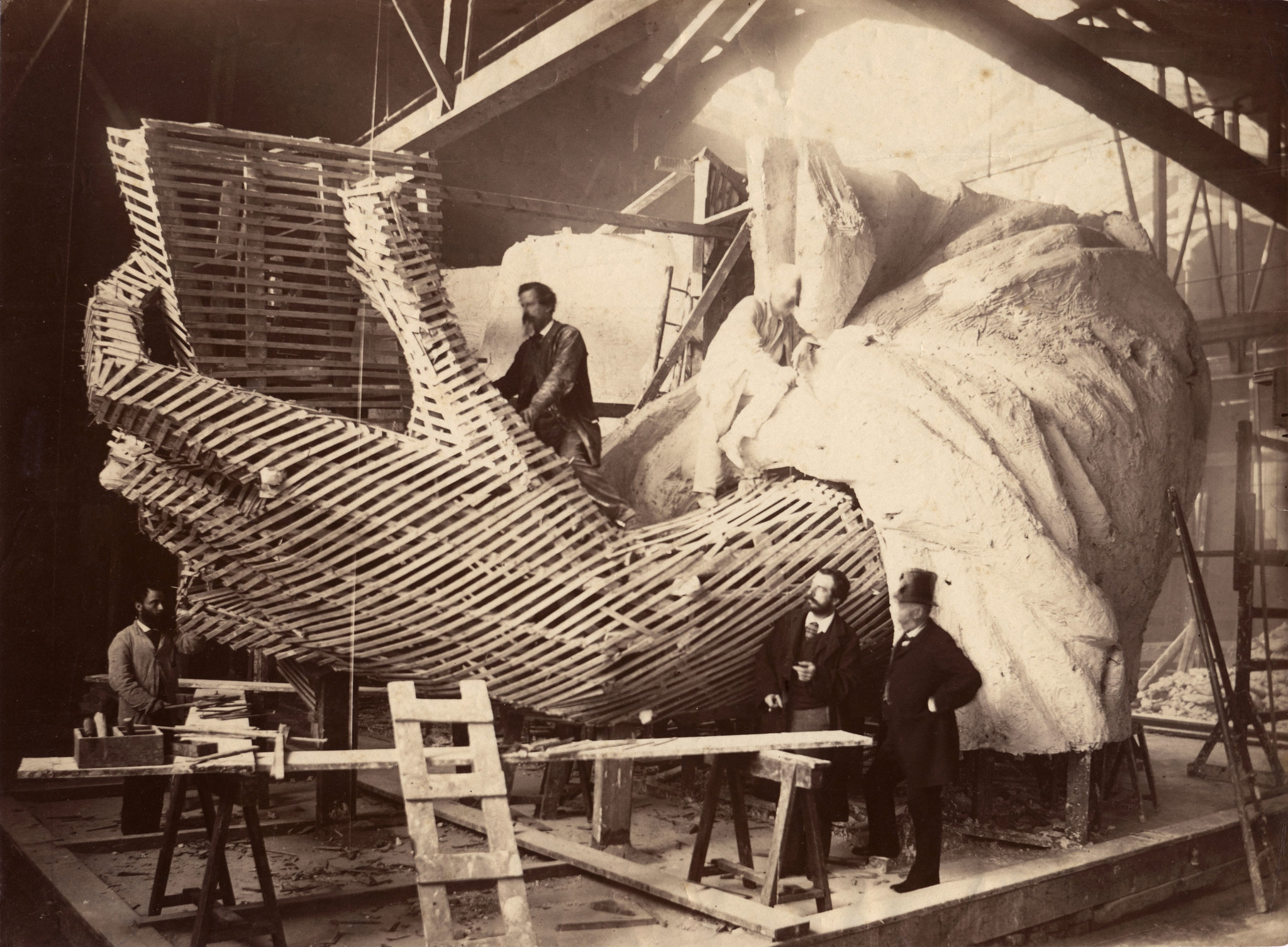Nowadays the United States is getting highlighted in news headlines for many reasons, maybe it’s Donald Trump or due to its voyage, culture and historical landmarks. But apparently, it is the most wonderful destination for tourists in the world. Popular attractions such as the Statue of Liberty, Golden Gate Bridge, Mount Rushmore, and Grand Canyon serve as fuel for its popularity. All these naturally come to our minds due to their lasting impacts on global cultures. But the most popular one is the Statue of Liberty which you have seen in many popular Hollywood movies such as The Godfather, Man in Black, 2012 etc.
Here, know everything about the Statue of Liberty:
Statue of Liberty
Statue of Liberty which is formally known as the Liberty Enlightening the World. It stands with pride in New York’s Liberty Island, the USA as an iconic monument which commemorates the independence of the United States. It was given by the people of France to the Americans for honouring the friendship. This copper statue is a living symbol of freedom to millions around the world and it is recognized as a universal symbol of freedom and democracy. It stands 305 feet high with its base depicting a woman carrying a torch in her raised right hand and a notebook bearing the date of approval of the Declaration of Independence in her left hand.

There is also a small museum created nearby, known as the Liberty Museum, which celebrates those who created it, those who constructed and paid for it, the values it reflects and the hopes it holds.
Also Read: Know Everything About Roman Colosseum of Italy
The Elis Island
With the placing of The New Colossus on a slab in the foundation in 1903, the Statue of Liberty importance began as a motivation to labours who sailed past her on their way to America. Later the Statue was placed upon a granite foundation inside the courtyard of the star-shaped walls of Fort Wood.

A Presidential Proclamation declared Fort Wood a National Monument on October 15, 1924, and the monument’s boundary was set at the outer edge of Fort Wood. Again in 1937, the judiciary was set up to include all of Bedloe’s Island and in 1956, the island’s name was changed to Liberty Island. On May 11, 1965, Ellis Island was also transferred to the National Park Service and became part of the Statue of Liberty National Monument.
History of Statue of Liberty
France gave the Statue of Liberty to the United States for the celebration of their friendship during the Revolutionary War. In 1884, the architect Richard Morris Hunt designed the granite pedestal of the Statue of Liberty. Financing for the pedestal was completed in August 1885, and construction of the pedestal was completed in April 1886. The statue was completed in France in July 1884 and arrived on board the French frigate Isere in New York Harbor in June 1885. Various parts of the statue were on display throughout Paris as they were completed.

Its head was exhibited in the gardens at the Trocadero and her torch was on display as well. In 1886, President Grover Cleveland officially dedicated the Statue of Liberty in front of thousands of spectators.
Building Details
The statue was designed by artist Frederic Auguste Bartholdi, and Gustave Eiffel, who designed the Eiffel Tower, was in charge of the iron framework under the copper plating. The statue was designed in Paris and shipped in 1885 to the United States. Construction commenced in 1875 and was not completed until 1884. Crews spent nine years working round the clock, seven days a week, to complete the structure.

The statue was disassembled into 350 pieces when it was complete in 1885, packed into 214 crates and shipped to New York City, and then reassembled. It just took 4 months to reassemble the Statue of Liberty! On 28 October 1886, the Statue of Liberty was dedicated. In 1924 it was designated a National Monument. Later it was also mentioned under UNESCO world Heritage site.
Recent Status of Statue
The Statue of Liberty is coated by a thin layer of copper that turns age blue-green by chemical reactions between metal and water. By the beginning of the 20th century, the oxidation of the copper skin of the statue by exposure to heat, wind and sun had given the statue a distinctive green colour, known as verdigris.
After 11 September 2001 the terrorist attacks closed Liberty Island for 100 days; it was not until August 2004 that the Statue of Liberty itself reopened to the visitor. The statue’s crown was reopened to the public again in July 2009, but tourists have to make a reservation to travel to the top of the pedestal or to the crown.
Also Read: Sculptures of Mount Rushmore: Weirdest Monument of South Dakota

